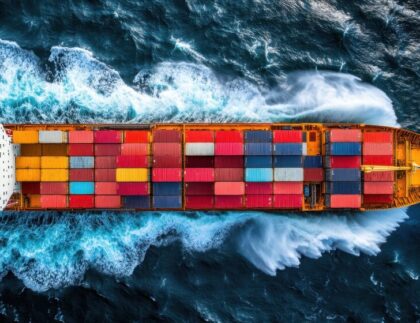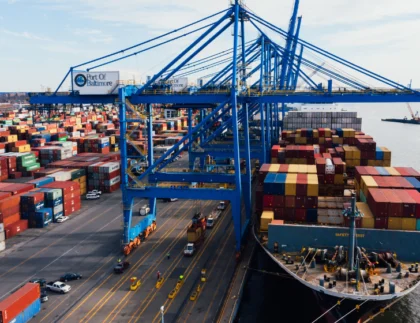
The container shipping industry has always been shaped by cycles of boom and bust.
After years of pandemic-era demand surges, record freight rates, and strained supply chains, the market in 2025 is facing the opposite challenge: overcapacity.
With global trade growth slowing and an influx of newly delivered mega-vessels, shipping lines are once again relying on an old but effective tool to stabilize the market—blank sailings.
What Are Blank Sailings?
A blank sailing occurs when an ocean carrier cancels a scheduled voyage, either by skipping a port call or withdrawing the sailing entirely.
While shippers often see blank sailings as disruptive, they serve as a key mechanism of shipping capacity management. By strategically removing capacity from certain trade lanes, carriers aim to balance supply with demand, reduce operational costs, and prevent freight rates from collapsing.
In 2025, blank sailings have returned with greater intensity—now executed in a more coordinated, strategic, and frequent manner, especially during key demand periods such as peak season.
The Overcapacity Challenge in 2025
Overcapacity is not new to the industry, but the scale of it this year is significant. A wave of ultra-large container vessels (ULCVs) ordered during the pandemic boom has now entered service, adding millions of TEUs to global capacity. At the same time, demand growth has been modest, with many economies experiencing slower consumer spending and geopolitical uncertainties weighing on trade flows.
The result is a widening supply-demand imbalance in shipping. Too many ships are chasing too little cargo, driving ocean freight rate volatility. Spot rates have fallen sharply on major east-west trade lanes, and carriers are under pressure to preserve profitability.

Carrier Alliance Strategies
One reason blank sailings have become more effective in 2025 is the role of carrier alliances. Through vessel sharing agreements (VSAs), alliances like 2M, THE Alliance, and Ocean Alliance are able to coordinate capacity deployment more efficiently than individual carriers acting alone.
Instead of one line unilaterally pulling a vessel—which might simply allow competitors to scoop up the cargo—alliances jointly cancel sailings and adjust schedules. This collective action ensures that capacity reductions have a meaningful impact on market dynamics.
In practice, this might mean:
- Joint blank sailings across multiple carriers in the same alliance.
- Adjusted port rotations to optimize vessel utilization.
- Cascading of smaller vessels into secondary trade routes while cutting back on primary lanes.
Such carrier alliance strategies allow the industry to prevent freight rates from collapsing completely, even during soft demand periods.
Impact on Freight Rates and Forwarders
For shippers and freight forwarders, blank sailings are a double-edged sword. On one hand, they contribute to ocean freight rate volatility—rates can spike unexpectedly if space is suddenly reduced. On the other, they introduce operational uncertainty, as canceled sailings lead to delays, rolled cargo, and disruptions in supply chains.
The freight forwarding market has been forced to adapt. Many forwarders are diversifying carrier partnerships, booking earlier, and leveraging digital platforms to gain real-time visibility into schedule changes. Some are even shifting short-haul cargo to alternative modes, such as rail or air freight, to mitigate the risk of delays.

Peak Season Blank Sailings
Perhaps the most contentious trend in 2025 is the rise of peak season blank sailings. Traditionally, peak season (August–October) saw carriers add capacity to accommodate the surge in shipments ahead of holiday sales. This year, however, some carriers are intentionally canceling voyages even during these high-demand months.
By doing so, alliances are attempting to sustain higher rate levels during the peak. While effective for carriers’ bottom lines, it has drawn frustration from importers who are already grappling with port congestion effects, labor shortages, and tighter inventory management requirements.
Broader Market Shifts
Blank sailings are not happening in isolation—they are part of a broader evolution in container shipping:
1. Port Congestion Effects – Although congestion is less severe than during the pandemic, localized disruptions at key hubs (e.g., strikes, infrastructure bottlenecks, weather events) still prompt carriers to skip ports, effectively blending operational blank sailings with strategic ones.
2. Environmental Regulations – With stricter emissions targets in force, some carriers are aligning blank sailings with "slow steaming" or vessel idling strategies to cut carbon output while managing excess capacity.
3. Digitalization of Scheduling – Shippers now have more tools to track schedule reliability. However, greater transparency also exposes how frequently blank sailings are used as a lever for rate control.
4. Shifts in Trade Patterns – Nearshoring and regionalization are reducing demand for long-haul shipping in some corridors, amplifying the need for capacity discipline in traditional east-west trades.

Looking Ahead
The reliance on blank sailings underscores a fundamental reality: container shipping remains a cyclical, volatile industry. As long as supply and demand are out of sync, carriers will resort to capacity management tactics to stabilize the market.
For shippers, the key lies in resilience. Building flexibility into logistics strategies, diversifying partners, and staying attuned to carrier scheduling patterns are essential to navigating this new normal.
While blank sailings may feel like a setback for supply chain reliability, they are, in many ways, a necessary mechanism for preventing a collapse in carrier profitability—one that would ultimately destabilize the industry further.
In 2025, the return of blank sailings highlights the delicate balancing act between efficiency, profitability, and predictability in global shipping. The winners will be those who can adapt quickly, whether through strategic alliances, digital innovations, or more resilient supply chains.











